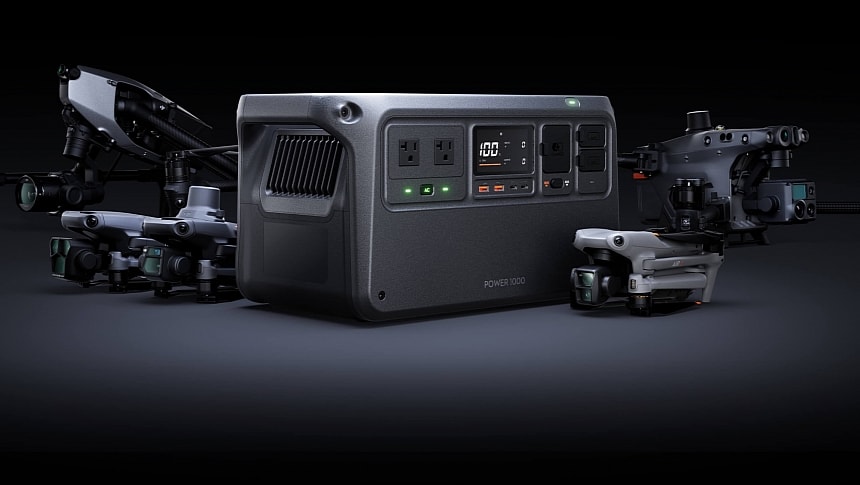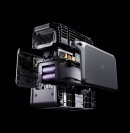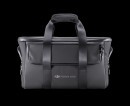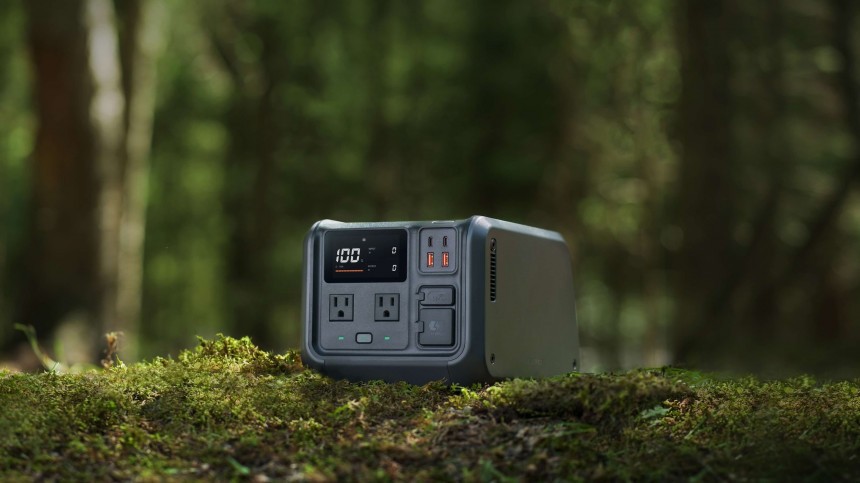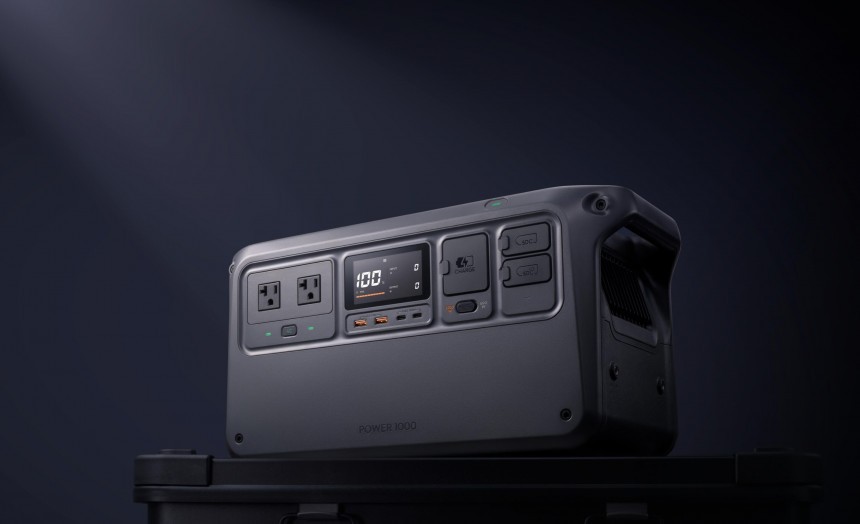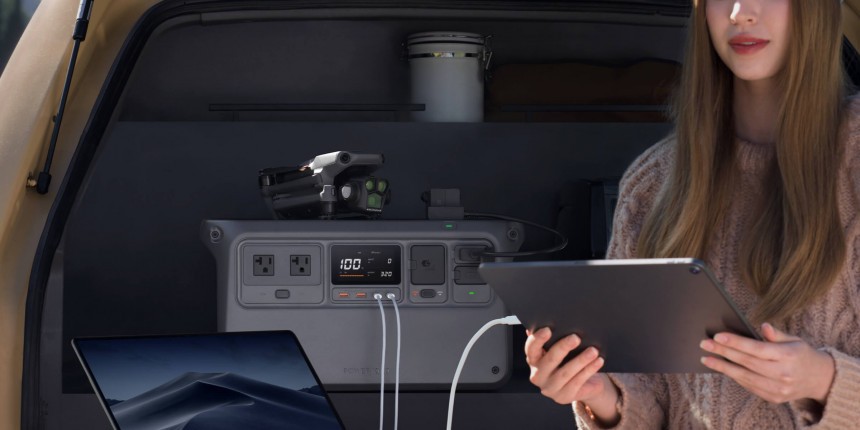Over the years, we've come to know DJI as the sort of brand responsible for cameras, drones, microphones, and a few others. However, DJI recently unveiled a new solution: power banks.
That's right, folks, DJI, the one and the same responsible for some of the neatest drones on the market, among others, is now in the business of selling portable power banks, and frankly, it's about time; it was about the one and only missing piece in their ecosystem of products. Heck, I myself have carried around off-brand battery banks to recharge my Mini 2 drone's batteries once drained after filming, not to mention microphones and other rechargeable batteries. Time to see if this crew has what it takes to blow away other established brands.
Overall, two systems are available in the new Power Series lineup, the Power 1000 and Power 500, each of which has its own tricks up its sleeve. As such, we'll be breaking things down into two categories. That way, you can find the right solution for you, assuming you're in the market for a portable power bank.
First, we'll be shedding light on the 500, the smaller of the two banks, and the one that most people will go for due to it being lighter and smaller, thus, easier to carry around, and cheaper, selling for a flat $500 on Amazon.
What's neat about this puppy is that it can crank out 1,000 W of power and can recharge drone batteries in as little as 28 minutes, depending on the battery size. According to DJI, it'll also recharge a smartphone up to around 28 times. With multiple power slots, you can recharge anything with a USB port and AC power cord.
As for recharging the bank itself once drained, DJI incorporated an array of ways to do so. You can plug it into the grid, such as a wall socket, suck power directly from your vehicle, juice it up via a USB port, or, my favorite, use solar panels. The latter is the best way to take full advantage of free energy.
But the magic doesn't end there. One area where DJI implemented extensive R&D is in safety. As such, the Power 500 is equipped with countless systems ensuring the safest of operations. This includes 11 temperature sensors, power outage protection, and a BMS. Together, they grant this machine an SGS Switzerland Authority Certification.
As for a few specs you need to know about, overall, you'll be carrying around a smorgasbord of lithium ferrophosphate (LFP) cells that weigh a total of 7.3 kg (16 lbs), so you won't be lugging it up any mountain hikes unless it is about the only thing you carry. Oh, 4,000 cycles is what you can squeeze out of this one before we see capacity drop below 70%.
Then there's the Power 1000, which is a whole lot like the 500, just bigger, better, and clearly more expensive, selling for $1,000 on Amazon. But if you do a bit of searching, you'll encounter stores that are selling these for quite a bit less, so take the time to look for the right deal; I found one selling for $700!
For this system, DJI wanted to be the power bank brand you rely on because the manufacturer states that it can operate up to 99% of all household appliances; I'm still trying to figure out what the 1% may be because DJI states that the 1000 can be used as backup power for a fridge for up to 45 hours. As for recharging your drones and any other DJI equipment you may own, the same stats as the 500 are displayed, bringing a battery from 10% to 95% in as little as 28 minutes.
One difference we see is the fact that this unit can't be recharged by USB port, but the grid can help, and so can your car, and solar panels are always the best direction for recharging all 1,024 Wh of juice this puppy brings to the table. It is clearly heavier, weighing 13 kg (29 lbs), according to DJI.
Furthermore, both of these systems can be accompanied by several DJI products, including fast-charge cables for specific drone batteries, a protective case for carrying them, and solar panels from Zignes. The latter also has me thinking: Is DJI on the way to becoming a producer of solar panels? Honestly, with the way this manufacturer has been approaching industry after industry and rising to the top in the process, I feel that, yes, DJI may very well be hitting the market with this last missing piece of their green energy puzzle.
If you want to see one of these systems for yourself, be sure to check out DJI's store locator, head down there, and see what the DJI Power Series can do and if it fits your lifestyle. Let us know how you feel in the comment section below.
Overall, two systems are available in the new Power Series lineup, the Power 1000 and Power 500, each of which has its own tricks up its sleeve. As such, we'll be breaking things down into two categories. That way, you can find the right solution for you, assuming you're in the market for a portable power bank.
What's neat about this puppy is that it can crank out 1,000 W of power and can recharge drone batteries in as little as 28 minutes, depending on the battery size. According to DJI, it'll also recharge a smartphone up to around 28 times. With multiple power slots, you can recharge anything with a USB port and AC power cord.
As for recharging the bank itself once drained, DJI incorporated an array of ways to do so. You can plug it into the grid, such as a wall socket, suck power directly from your vehicle, juice it up via a USB port, or, my favorite, use solar panels. The latter is the best way to take full advantage of free energy.
But the magic doesn't end there. One area where DJI implemented extensive R&D is in safety. As such, the Power 500 is equipped with countless systems ensuring the safest of operations. This includes 11 temperature sensors, power outage protection, and a BMS. Together, they grant this machine an SGS Switzerland Authority Certification.
Then there's the Power 1000, which is a whole lot like the 500, just bigger, better, and clearly more expensive, selling for $1,000 on Amazon. But if you do a bit of searching, you'll encounter stores that are selling these for quite a bit less, so take the time to look for the right deal; I found one selling for $700!
For this system, DJI wanted to be the power bank brand you rely on because the manufacturer states that it can operate up to 99% of all household appliances; I'm still trying to figure out what the 1% may be because DJI states that the 1000 can be used as backup power for a fridge for up to 45 hours. As for recharging your drones and any other DJI equipment you may own, the same stats as the 500 are displayed, bringing a battery from 10% to 95% in as little as 28 minutes.
Furthermore, both of these systems can be accompanied by several DJI products, including fast-charge cables for specific drone batteries, a protective case for carrying them, and solar panels from Zignes. The latter also has me thinking: Is DJI on the way to becoming a producer of solar panels? Honestly, with the way this manufacturer has been approaching industry after industry and rising to the top in the process, I feel that, yes, DJI may very well be hitting the market with this last missing piece of their green energy puzzle.
If you want to see one of these systems for yourself, be sure to check out DJI's store locator, head down there, and see what the DJI Power Series can do and if it fits your lifestyle. Let us know how you feel in the comment section below.
